 | ||
Similar Ingá stone, Pedra Furada, Serra da Capivara National Park, France Antarctique | ||
KUHIKUGU A CIDADE PERDIDA NA FLORESTA AMAZÔNICA !
Kuhikugu is an archaeological site located in Brazil, at the headwaters of the Xingu River, in the Amazon Rainforest. The area around Kuhikugu is located in part of the Xingu National Park today. Kuhikugu was first uncovered by anthropologist Michael Heckenberger, working alongside the local Kuikuro people, who are the likely descendants of the original inhabitants of Kuhikugu.
Contents
- KUHIKUGU A CIDADE PERDIDA NA FLORESTA AMAZNICA
- Archaeological complex and history
- Settlement X11
- The Lost City of Z
- References
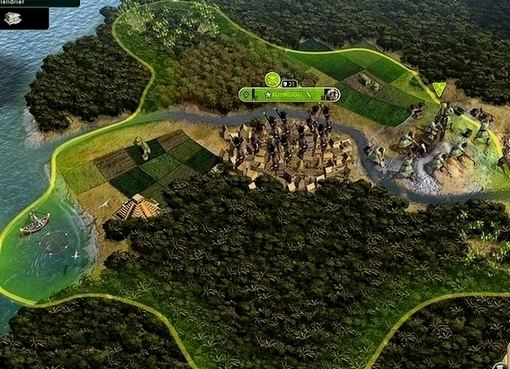
Archaeological complex and history
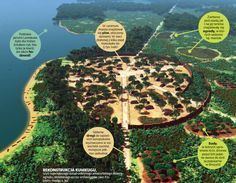
In the broad sense, the name refers to an archaeological complex including twenty towns and villages, spread out over an area of around 7,700 square miles (20,000 km2), where close to 50,000 people may have once lived. Kuhikugu was likely inhabited from a period of time around 1,500 years ago to a time as recently as 400 years ago, when the people living there were likely killed by diseases brought over by Europeans.
Settlement X11
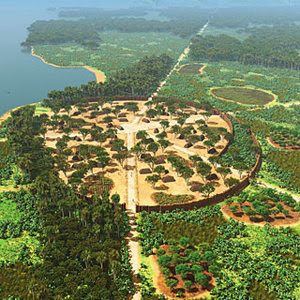
Strictly speaking, Kuhikugu is settlement X11 of this complex, located on the eastern shore of Lake Kuhikugu at the coordinates given above. There, as well as at other former settlements of the Kuhikugu complex, satellite imagery reveals that even today the forest differs from surrounding pristine areas, and ground-based exploration reveals this to be an effect of the anthrosol (cf. terra preta), known to the Kuikuro as egepe. Directly to the north of the X11 site there is a Kuikuro village, the small size of which provides an interesting comparison to the large area of egepe which indicates the prehistoric settlement.
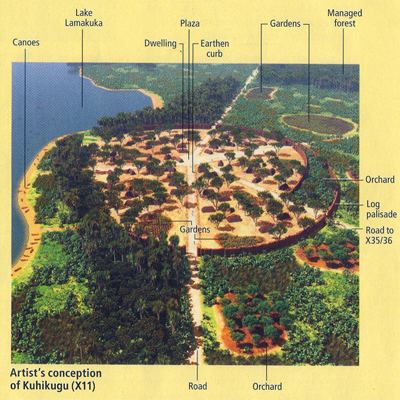
Large defensive ditches and palisades were built around some of the communities at Kuhikugu. Large plazas also exist at some of the towns throughout the region, some around 490 feet (150 m) across. Many of the communities at Kuhikugu were linked, with roads which bridged some rivers along their paths, and with canoe canals running alongside some of the roads. Fields of manioc (cassava) may have existed around the communities at Kuhikugu, suggesting that the people there were farmers. Dams and ponds which appear to have been constructed in the area also suggest that the inhabitants of Kuhikugu may have been involved with fish farming, which is still practiced by some of their modern day Kuikuro descendants.
The Lost City of Z
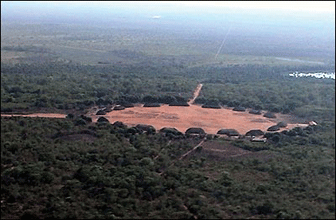
There is a possibility that legends regarding Kuhikugu may have influenced the British explorer Lieutenant Colonel Percy Fawcett to go on his ill-fated last expedition in 1925, looking through the Amazon rainforest for what he called "City Z."
